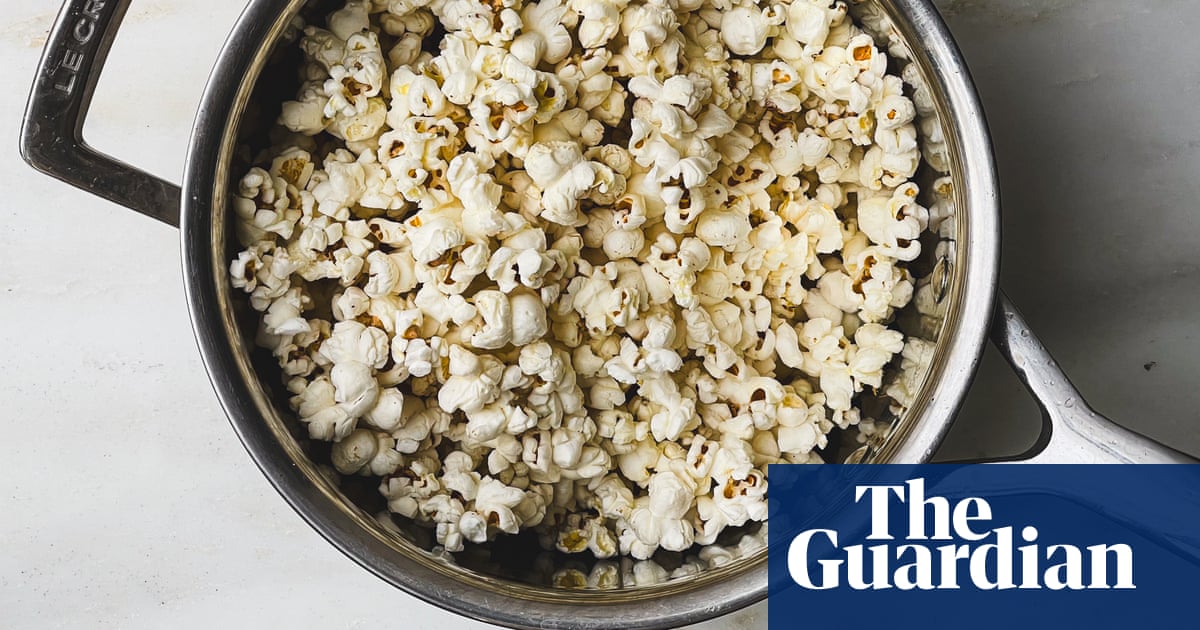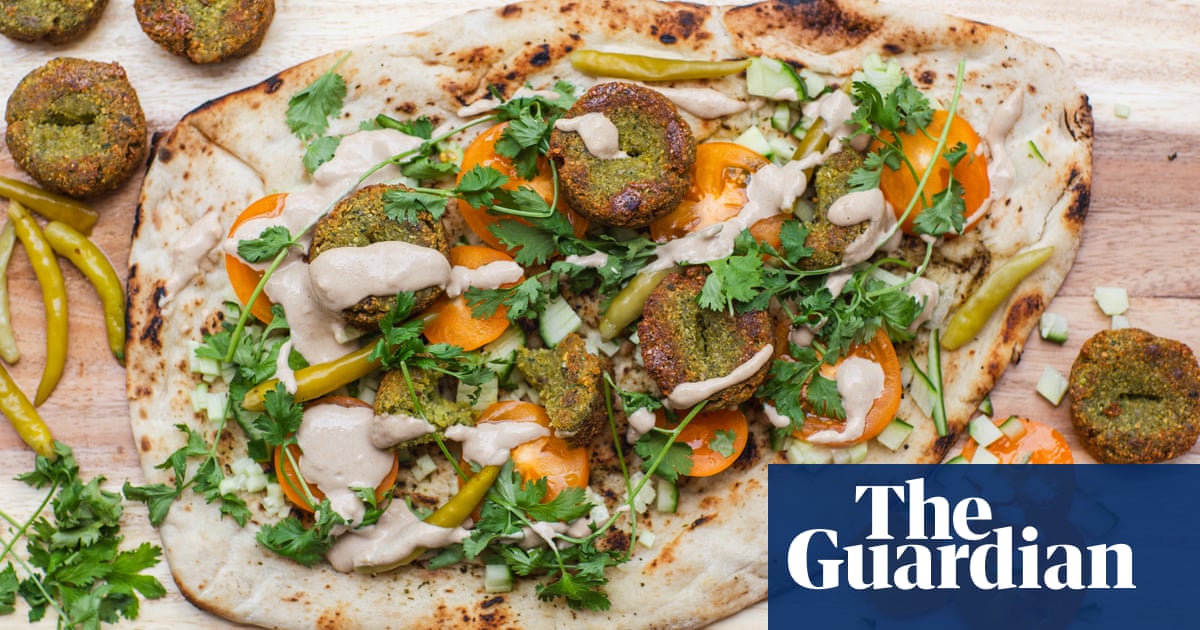
When you make a roast, fry bacon or grill burgers, an umami-rich, nourishing but often wasted ingredient called tallow, lard or schmaltz magically renders from the meat during the cooking. This free ingredient can be used instead of butter or oil in just about any savoury dish and, depending on the type, age and quality of the meat you use, its flavour will range from mild to intensely meaty. Lamb, mutton and beef fat have a very high smoke point between 200C and 205C, which makes them a great choice for cooking food at high temperatures, be that chips, roast potatoes or popcorn. For my tallow popcorn, I saved the fat from two grass-fed burgers, which yielded just over a tablespoon and a half of fat, plenty to pop a bowl of corn for two. The flavour was rich, savoury and, once seasoned with mustard powder and smoked sea salt, tasted remarkably like meat-flavoured crisps.
Tallow popcorn
Popcorn pops at 180C, so it’s important to use a fat with a relatively high smoke point. Lamb tallow popcorn is admittedly a bit of an acquired taste, but all dedicated lamb lovers out there, myself included, will enjoy it, I’m sure, perhaps seasoned with mustard powder or even grated horseradish and garlic powder.
When any fat (plant- or animal-based) smokes, its flavour is destroyed and its chemical composition changes, breaking down free fatty acids, and releasing free radicals and other harmful compounds you really don’t want to be eating. Using a fat with a high smoke point reduces those risks – just keep an eye on a pan and adjust the temperature as needed. You will know the fat is getting too hot if the ingredients start to spit and frazzle.
Poultry fat, including chicken, duck and goose, has a smoke point of 190C, while pork fat has a lower smoke point of 185C, so if you use any of these fats, whether in a pan or in the oven, keep the temperature lower than that so they don’t burn. Their lower smoke point means it’s best not to use them to cook popcorn, but they can still be used to flavour popcorn by heating them up and drizzling them over the popped kernels, much as you might toss them in seasoned butter. Chicken schmaltz, for example, is particularly delicious on popcorn, with nothing more than a little sea salt.
Two tablespoons of popcorn kernels should make a suitable portion of about three cups of popcorn. Choose the right sized pan for the number of portions you want to make – as a general rule, the pan needs to be wide enough so the popcorn sits no more than a layer on the base, giving as many of the kernels as possible a chance to pop successfully.
Serves 2
2 tbsp tallow, or another high smoke point fat such as ghee, organic rapeseed oil or sunflower oil
4 tbsp popcorn kernels (enough to make about 6 cups)
To serve (all optional and added to taste)
Sea salt or smoked sea salt
Mustard powder, smoked paprika or grated horseradish
Garlic powder
Put a suitably sized and ideally thick-based pan on a medium-high heat. Add the tallow (or other fat) and leave it to heat up and melt. Add the popcorn kernels, cover the pan with a lid and wait until you hear the corn start to pop. Give the pan a little shake, to agitate the corn a bit, and listen again. After a couple of minutes, when the pops slow down to just one every 20 seconds or so, carefully lift off the lid to check the popcorn is done. As soon as it’s ready, pour it straight into a bowl so it doesn’t catch and burn.
Season the hot corn to taste, and serve – tallow popcorn pairs especially well with smoked sea salt and perhaps a very light dusting of mustard powder, horseradish or hot smoked paprika, if you like things spicy.












